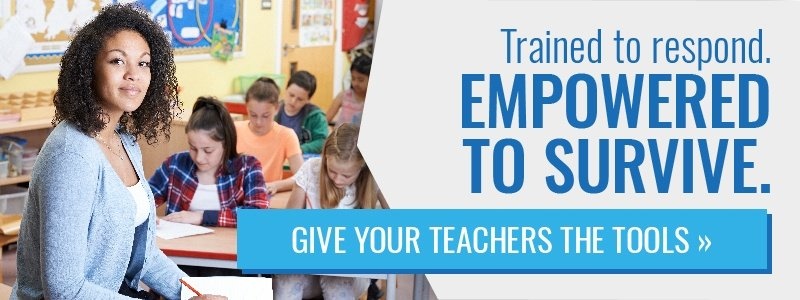 With every school shooting we hear or read about in the news, we find ourselves asking the same questions: Why does this keep happening? And how can we stop it?
With every school shooting we hear or read about in the news, we find ourselves asking the same questions: Why does this keep happening? And how can we stop it?
While there’s no good answer to either of those concerns, there are steps your school can take to identify safety concerns and limit risk. Here are 6 questions to consider as you assess how safe your school would be if an active shooter emergency were to occur.
Do you have an emergency gathering point?
While emergency gathering points are helpful in some situations such as a fire, they are not a good idea in active shooter situations. The last thing you want when an attacker is on the loose is to gather the entire school in one location. Not to mention, if the shooter happens to be a student, then they’re already aware of where the emergency meeting place is, which puts your students and staff in further danger.
Are your teachers trained to provide emergency medical care?
No doubt, the teachers at your school are trained in the basics like administering CPR and using EpiPens, but this type of training won’t stop life-threatening bleeding. A person can bleed out in 2-4 minutes, which makes first response critical. Providing your teachers with hands-on training allows them to practice the process for themselves so that they can be effective in those first moments when it matters most.
Do you have Bleeding Control Kits on hand?
Emergency medical training is much more effective if you have the equipment (although many first responders have saved their own lives and others by making improvised tourniquets out of things like computer cords).
Sometimes, however, the materials on hand are inadequate. Don’t put your teachers or your students in a precarious situation. Provide your teachers and staff with the supplies necessary to save a life in an emergency.
Is there a way to lock or barricade classroom doors?
Locks on a door won’t stop a bullet, but they can slow a shooter down or even deter an attacker from entering the room. If your classroom doors do not have locks, instruct teachers to arrange their classrooms in a way that allows them to quickly barricade the entrance. For example, position a large bookshelf next to the door that can be pushed in front of the entrance in an active shooter situation.
Is there an alternative escape route?
It’s not enough to lock or block a door and then wait. Teachers and students must have a way to exit the school building, putting as much space as possible between themselves and the shooter.
Every classroom that’s on the second story and above should have a rope ladder that allows a direct exit from the classroom. A room with only one exit – no windows or a second door – are not safe for your students or teachers.
Are students informed?
While it may be difficult to address the topic of a school shooting, the reality is that the students in today’s school system don’t remember a time without these tragedies. Because school shootings are so common, avoiding the topic brings more discomfort than actually talking about it.
Talk about your students’ concerns, but also establish a plan. Tell them about the Bleeding Control Kits available, and encourage them to think proactively like you do. As long as your classroom is on the same page, there is strength in numbers.
For more information on school safety, contact ProActive Response Group for a security consultation.
.png?width=499&height=133&name=Logo-menu%20(1).png)



